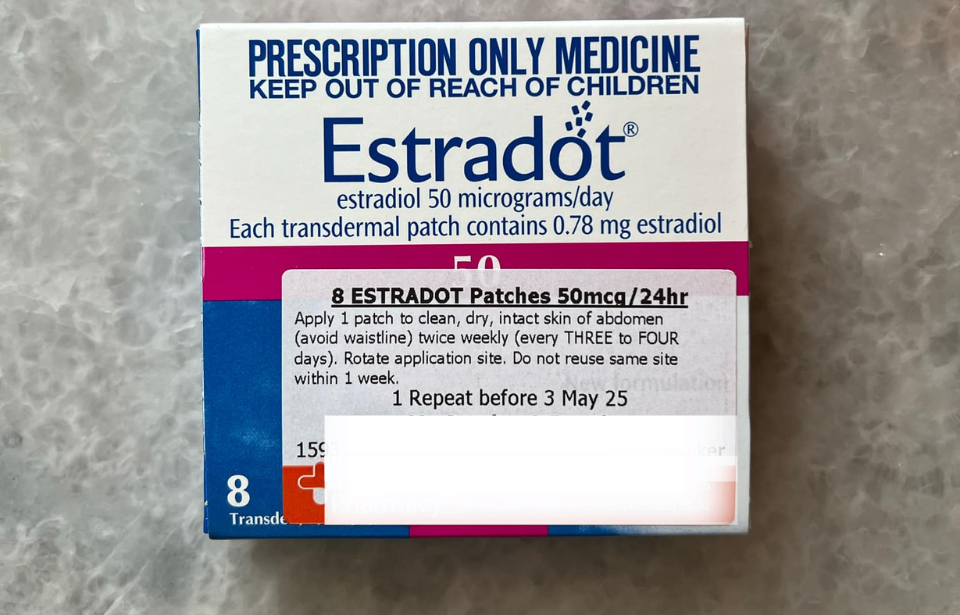Better awareness triggers higher demand for oestradiol patches
• April 9, 2025

Pharmac are proposing Estradot as an alternative brand of funded oestradiol patches. Photo: Supplied.
Demand for oestradiol patches in New Zealand has increased by over 150 per cent in three years, as more people become aware of treatments that can combat menopause symptoms.
Oestradiol patches are a form of hormone replacement therapy (HRT), often used to relieve menopause and peri-menopause symptoms.
Pharmac reports that 5.1 million patches were dispensed in the 2024/25 financial year, compared to 2 million in 2021/22.
It has been reported that demand is expected to continue increasing.
Menopause Specialist, Dr Edward Williams, says that better education around menopause has contributed to this rising demand.
“There has been an increase in awareness of them, largely from women's magazines.”
As a member of the Australasian Menopause Society, Dr Williams says he has noticed more information and emphasis on HRT in their communications.
An early 2000s study demonstrated that the risks of HRT may outweigh the benefits, leading to a “dramatic reduction” of prescriptions for HRT globally.
“There was a big shift towards natural products, which, in the long term, did not really work,” Williams says.
“Now, there's a resurge in the use of hormone treatment because people realise it's not the bad thing that study made it up to be. The study findings were reviewed and [reviewers] said, ‘Oh no, this is actually not entirely true’.”
The increase in demand has been witnessed worldwide, with Australia and Canada reporting upward trends in the prescription of estradiol patches.
As a result, there has been a global shortage of oestradiol patches as suppliers struggle to keep up with demand.
Pharmac has proposed funding two brands of oestradiol patches, instead of one, to “produce enough patches to meet the demand in New Zealand,” with the decision being finalised in June.
A user of oestradiol patches, Mel Rigby, says that she discovered HRT after “running out of options.”
“The more I learned about what the impact of menopause was like, the more I kind of ticked off the symptom list,” she says.
“Typically, you get put on things like antidepressants for lots of the symptoms. And so, I figured that I should try the hormone way."
Rigby says her experience has overall been positive and would recommend HRT to other women who are experiencing menopausal symptoms.
“I don't think it should be the last stop. I think it should be one of the first things to look at.”
Oestradiol is also offered in gel and tablet forms taken daily, but Rigby says she prefers the patches as they are easily applied and changed twice a week.
“If you have some treatment for it, you take it, and it works, great,” she says.
Dr Williams says that although the patches have proven an effective treatment for many, it is not a “fix-all” for everyone.
“You [doctors] need to make sure that they prescribe it for the correct person, for the correct reason.”
He also says that we still have some way to go in improving research and public discourse surrounding women’s health.
“[There’s] definitely a lot more space for education, for GPs, for women's health advocates to give women more information about hormone treatment or just management of menopause in general.”

Whakatairanga ka tika, whakamaua ngaa mita
AISHA CAMPBELL (NGĀTI RUANUI, NGĀ RAURU, NGĀ RUAHINE, TE ATIAWA, TARANAKI) • October 28, 2025

Supporters hope new council will save Western Springs Speedway
Savannah Lendich Jonkers • October 8, 2025


Whakatairanga ka tika, whakamaua ngaa mita
AISHA CAMPBELL (NGĀTI RUANUI, NGĀ RAURU, NGĀ RUAHINE, TE ATIAWA, TARANAKI) • October 28, 2025

Supporters hope new council will save Western Springs Speedway
Savannah Lendich Jonkers • October 8, 2025
